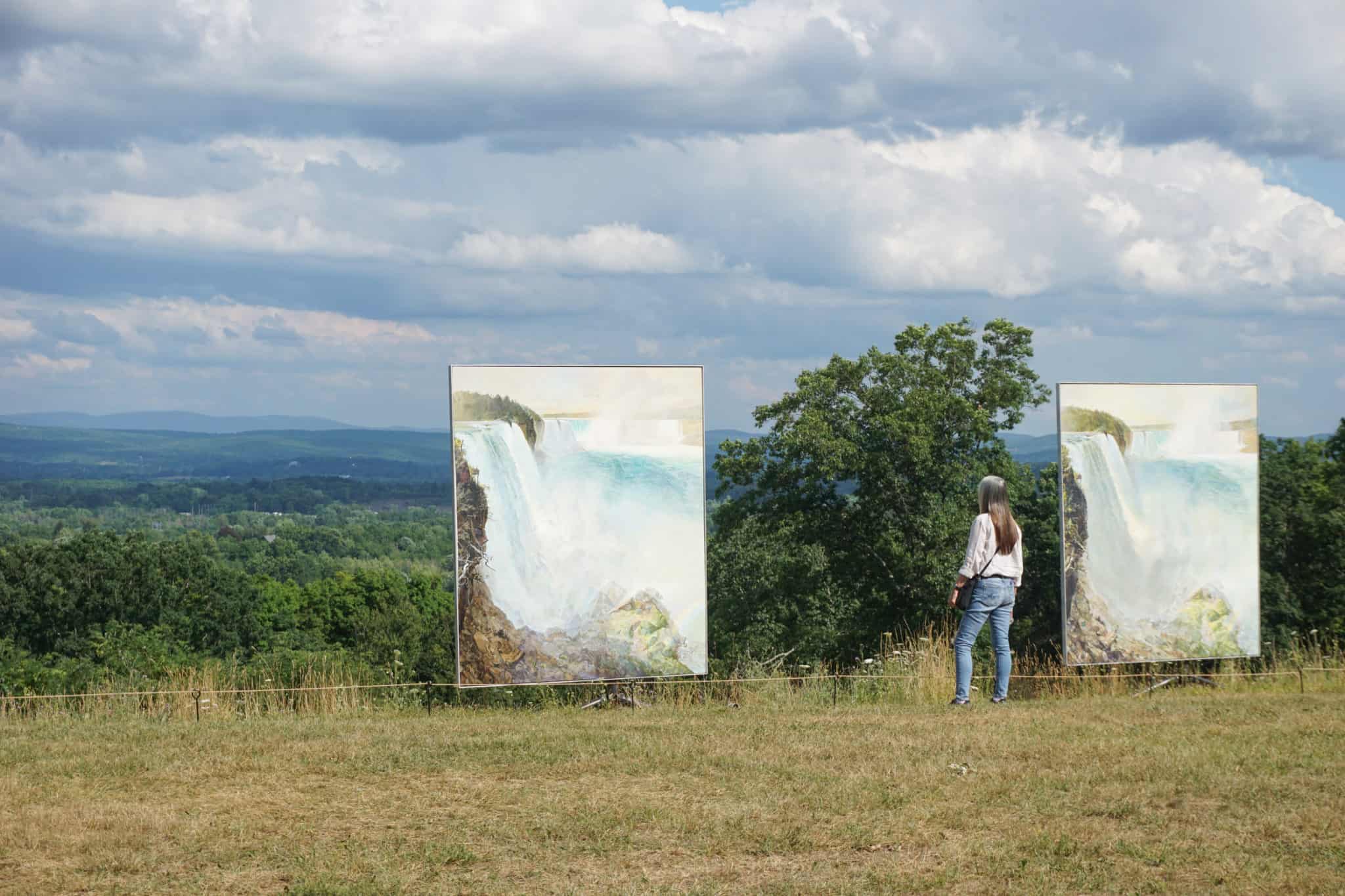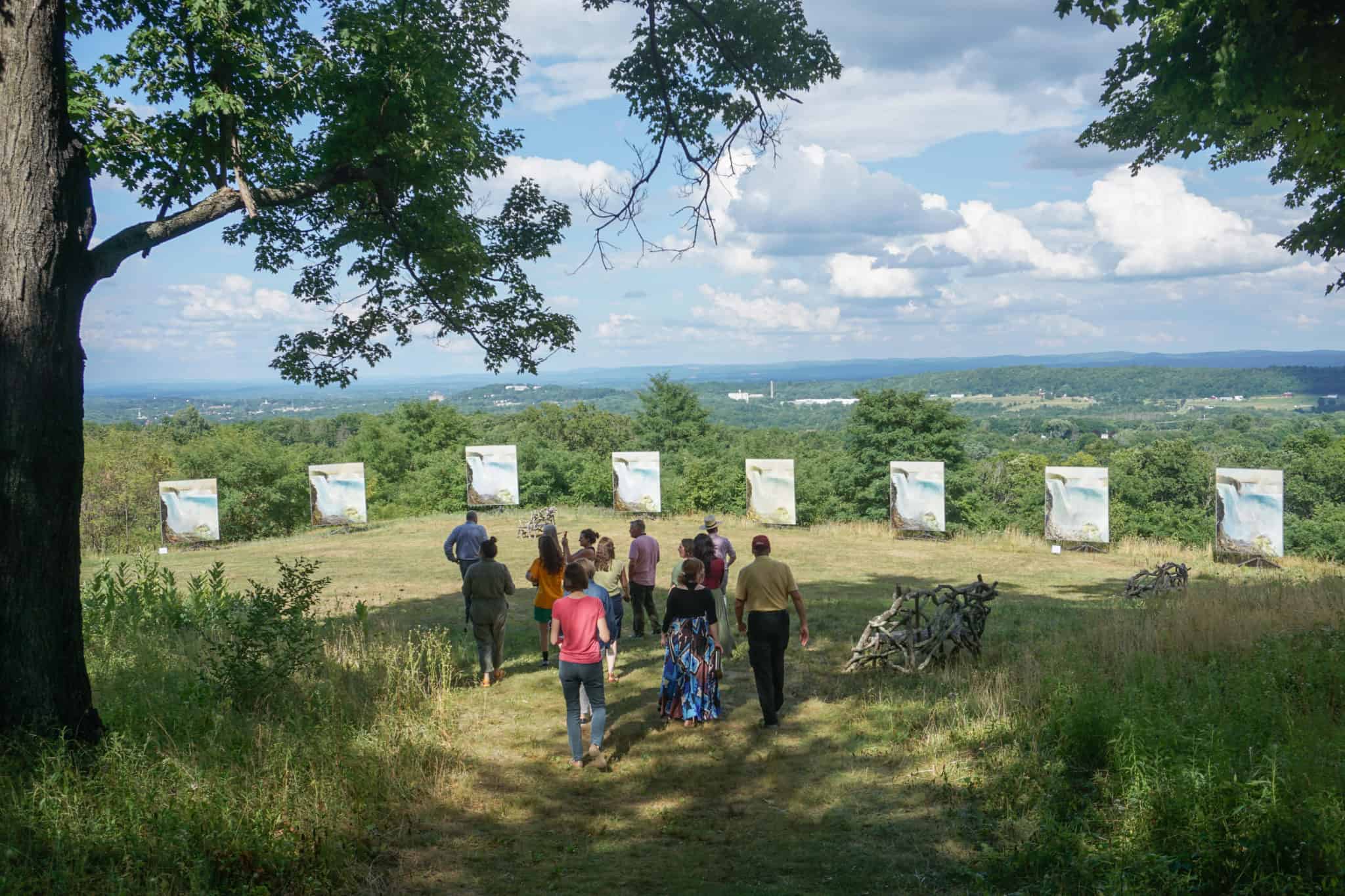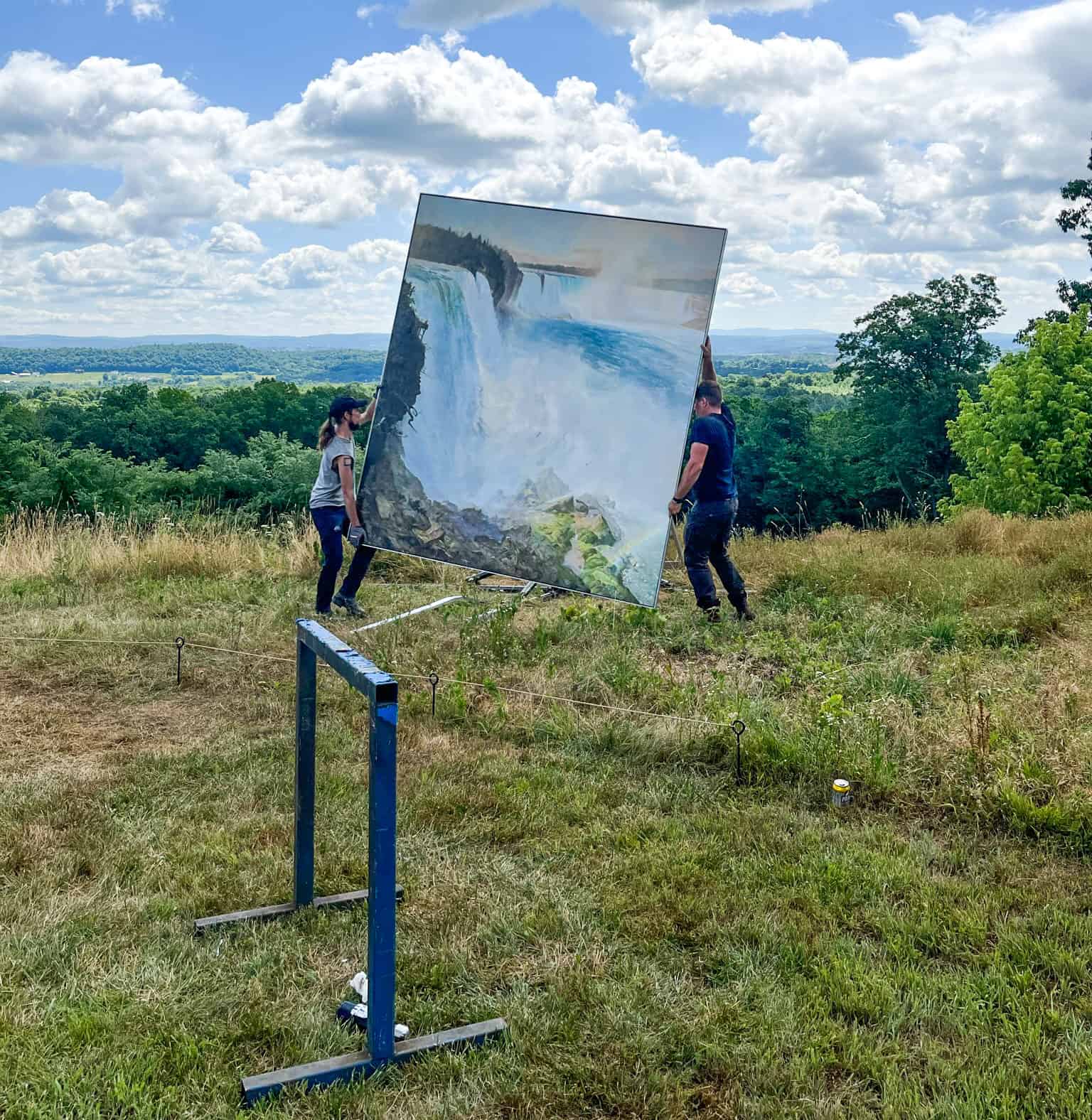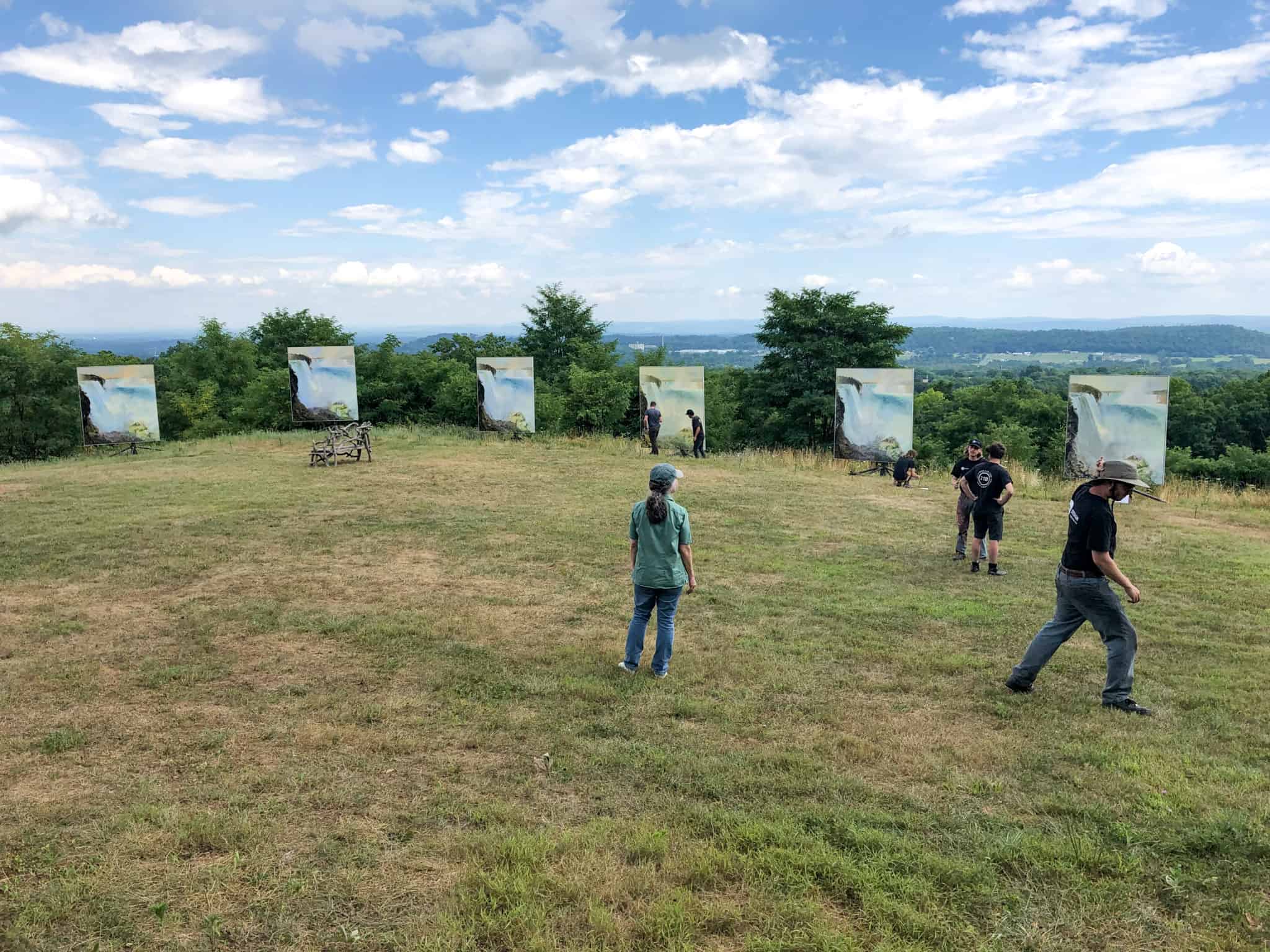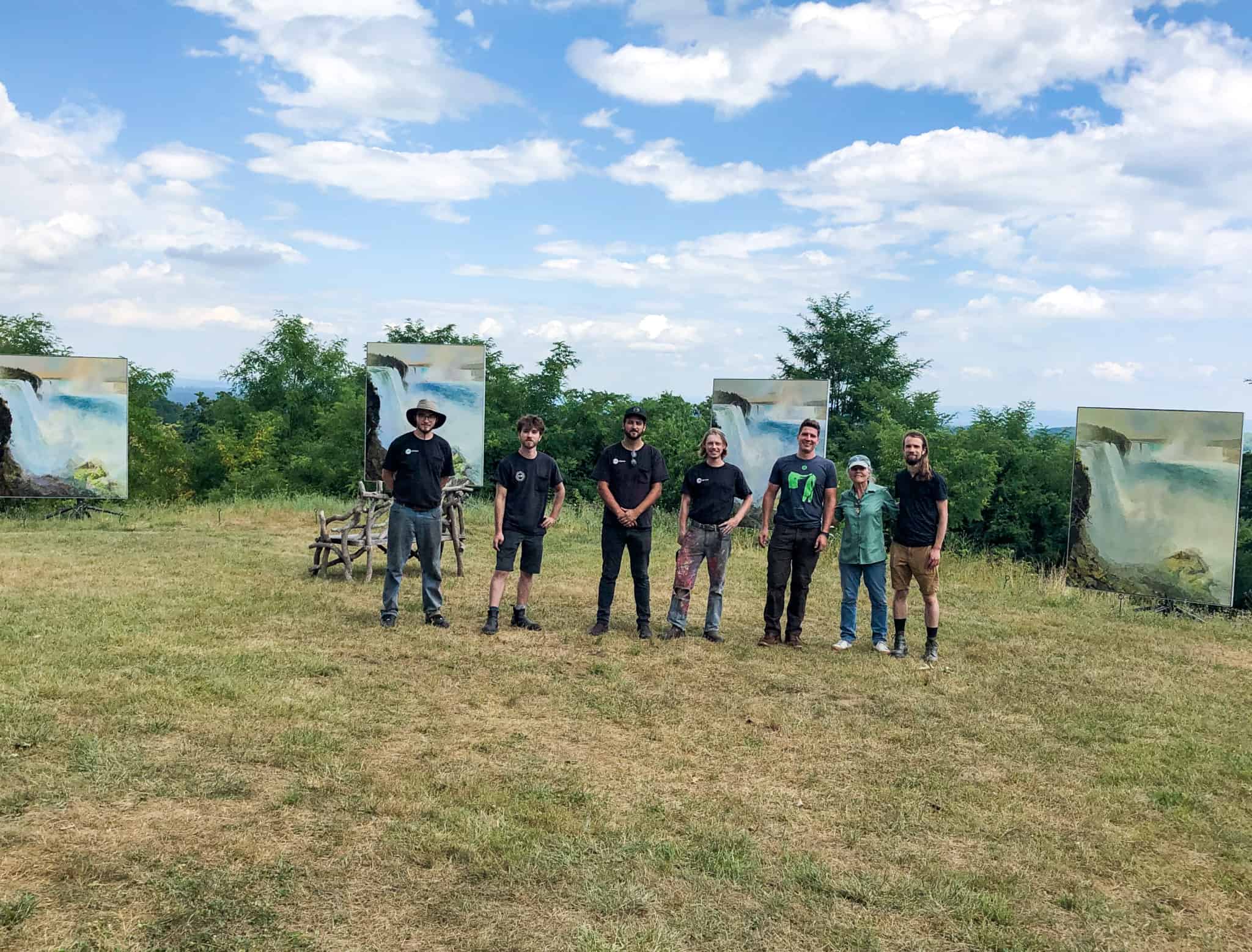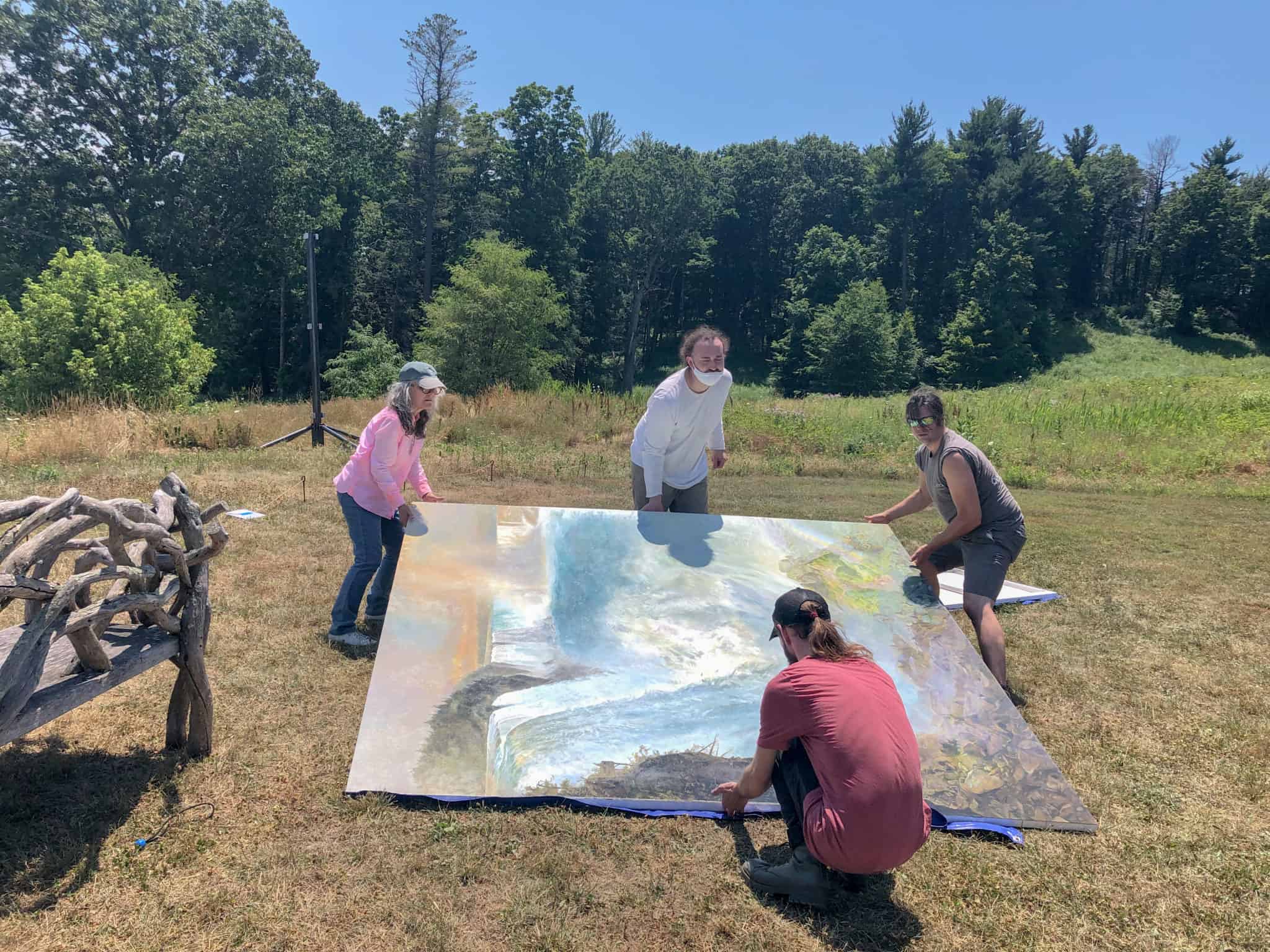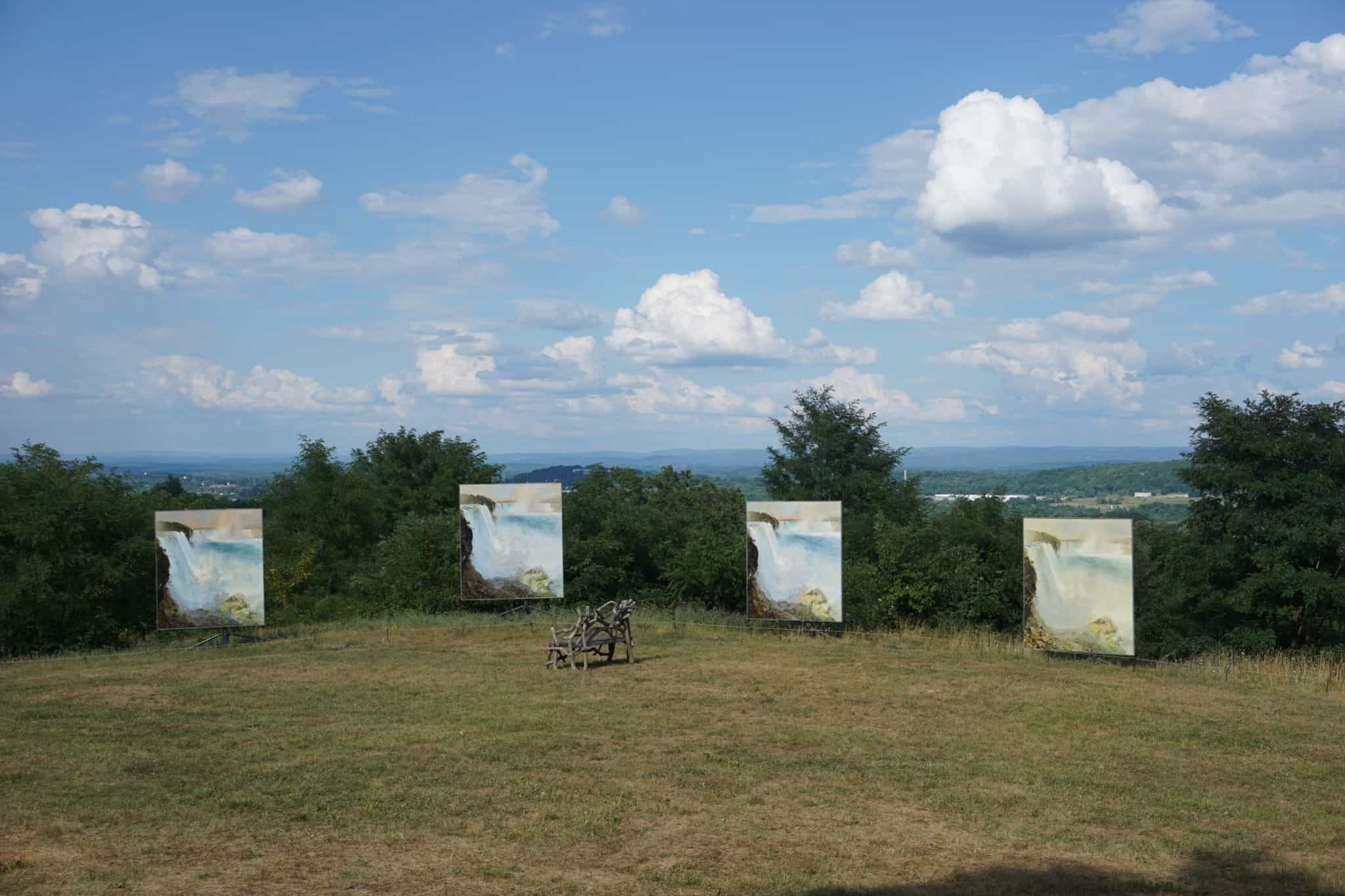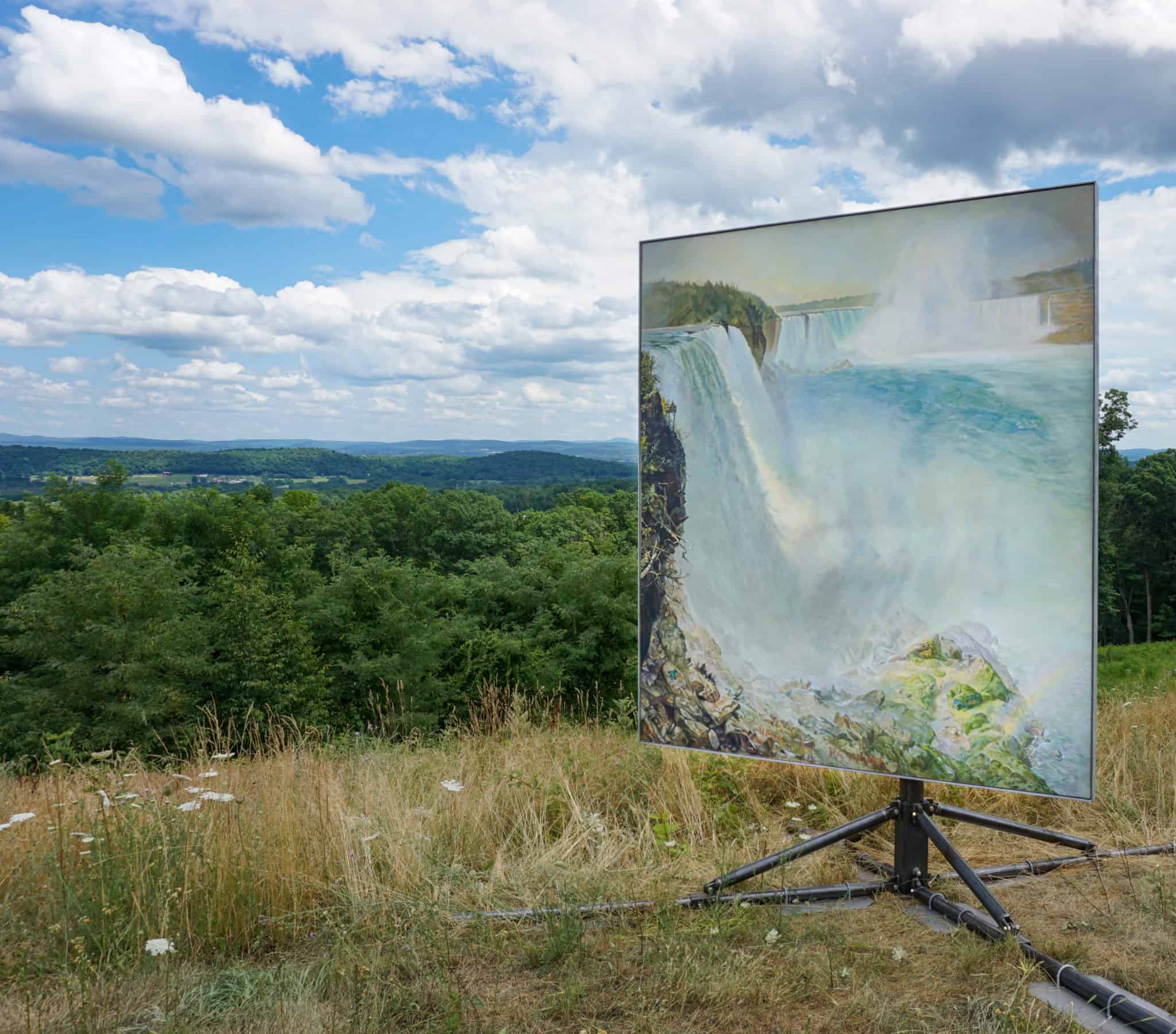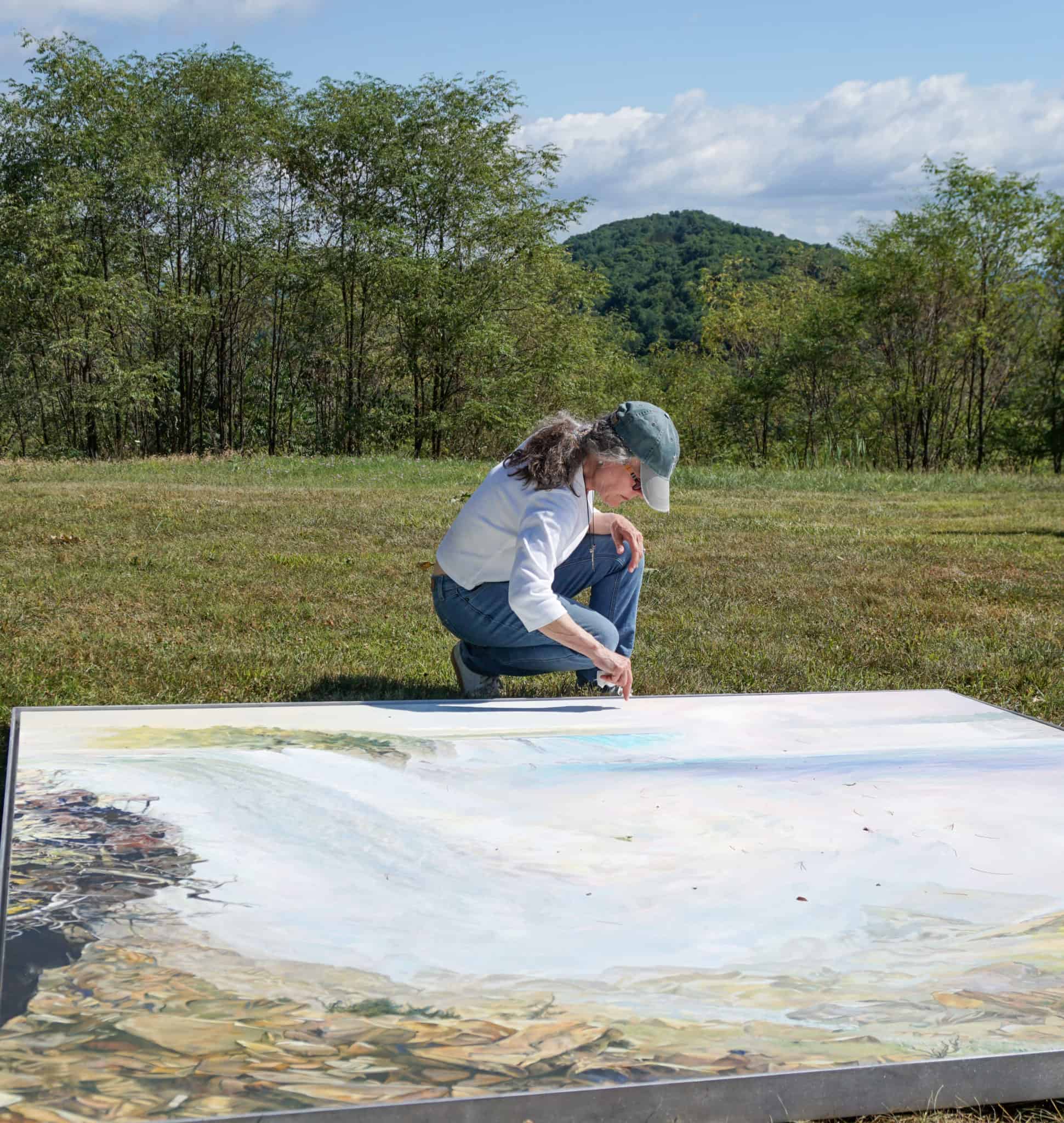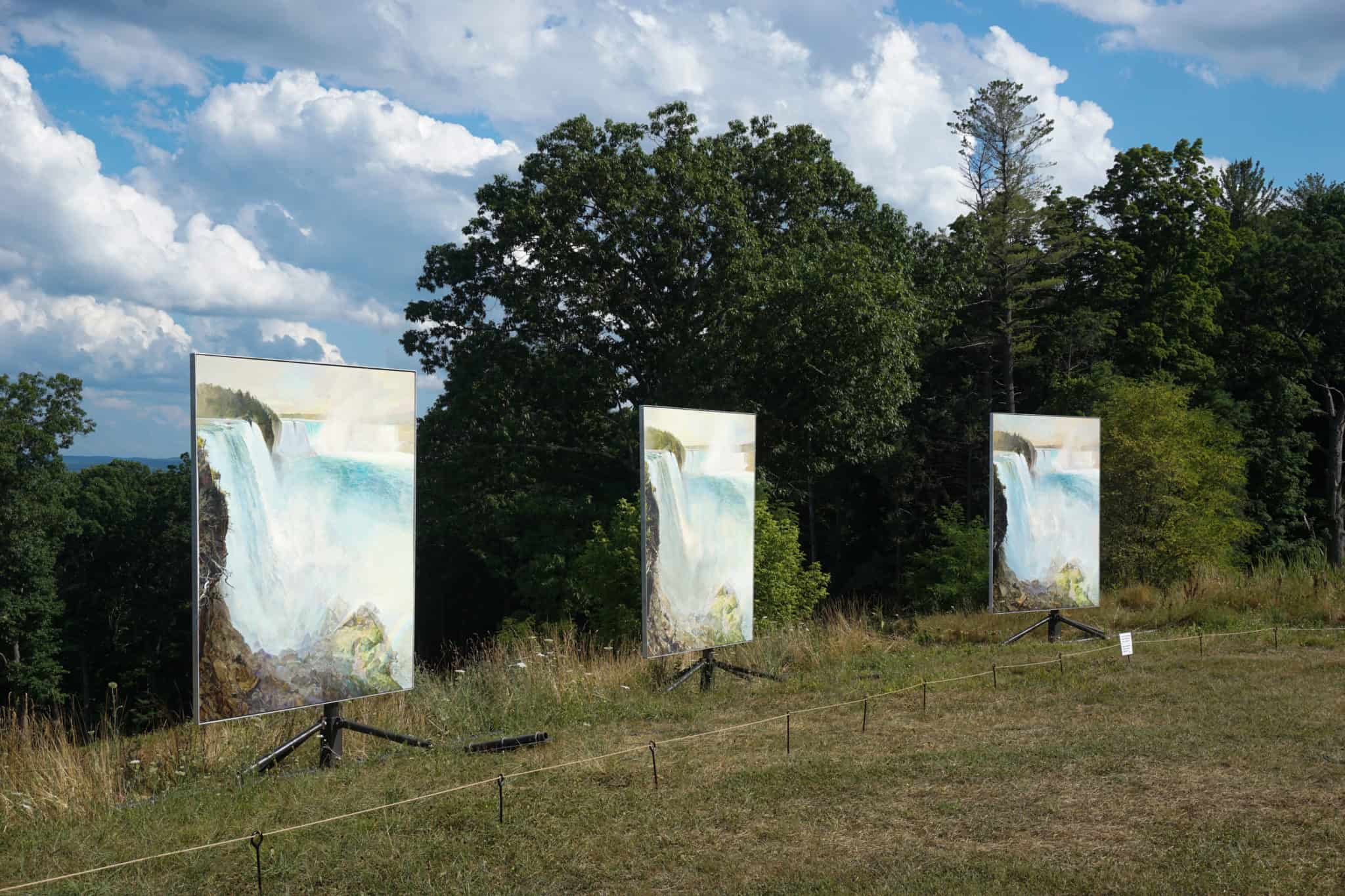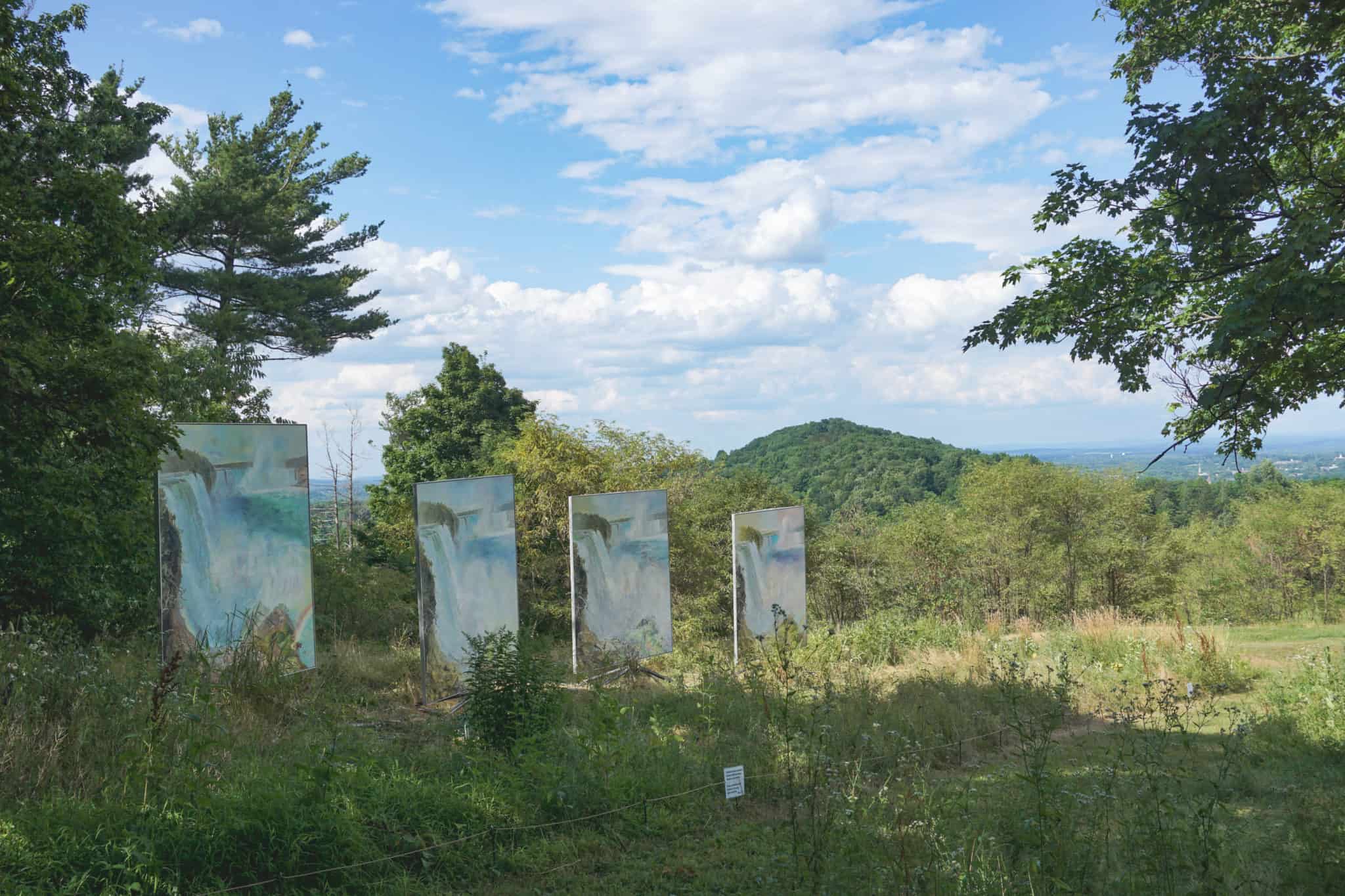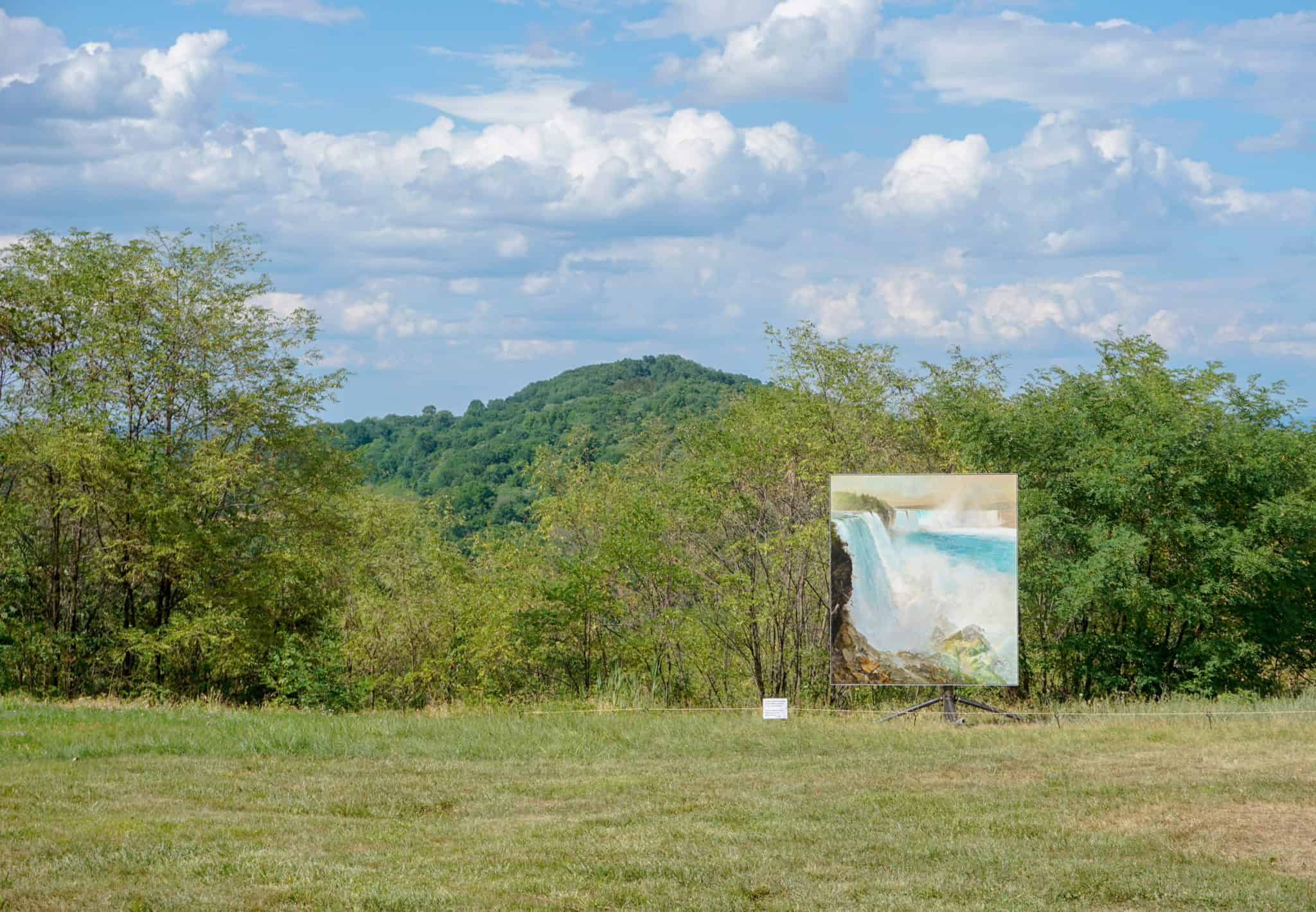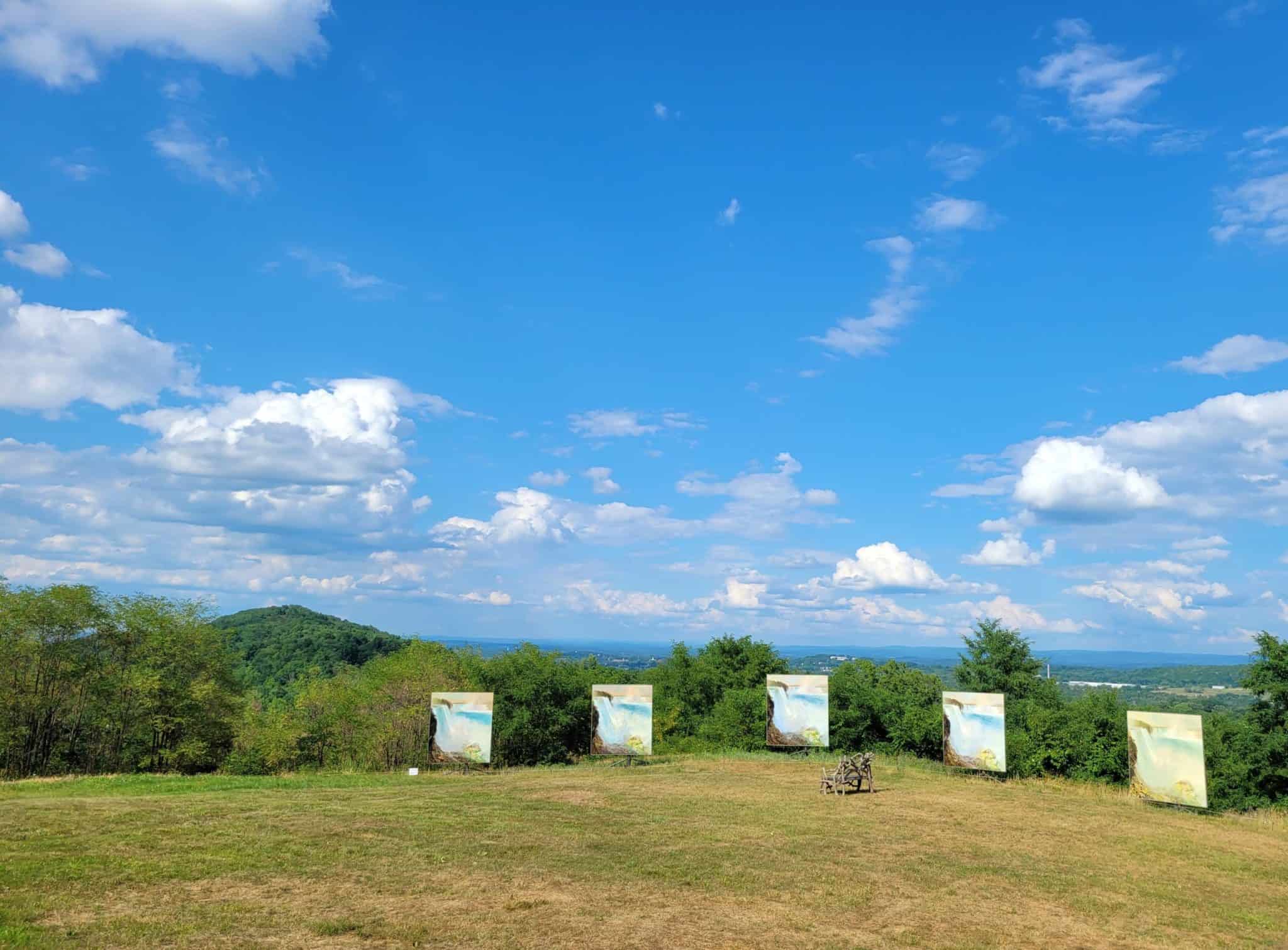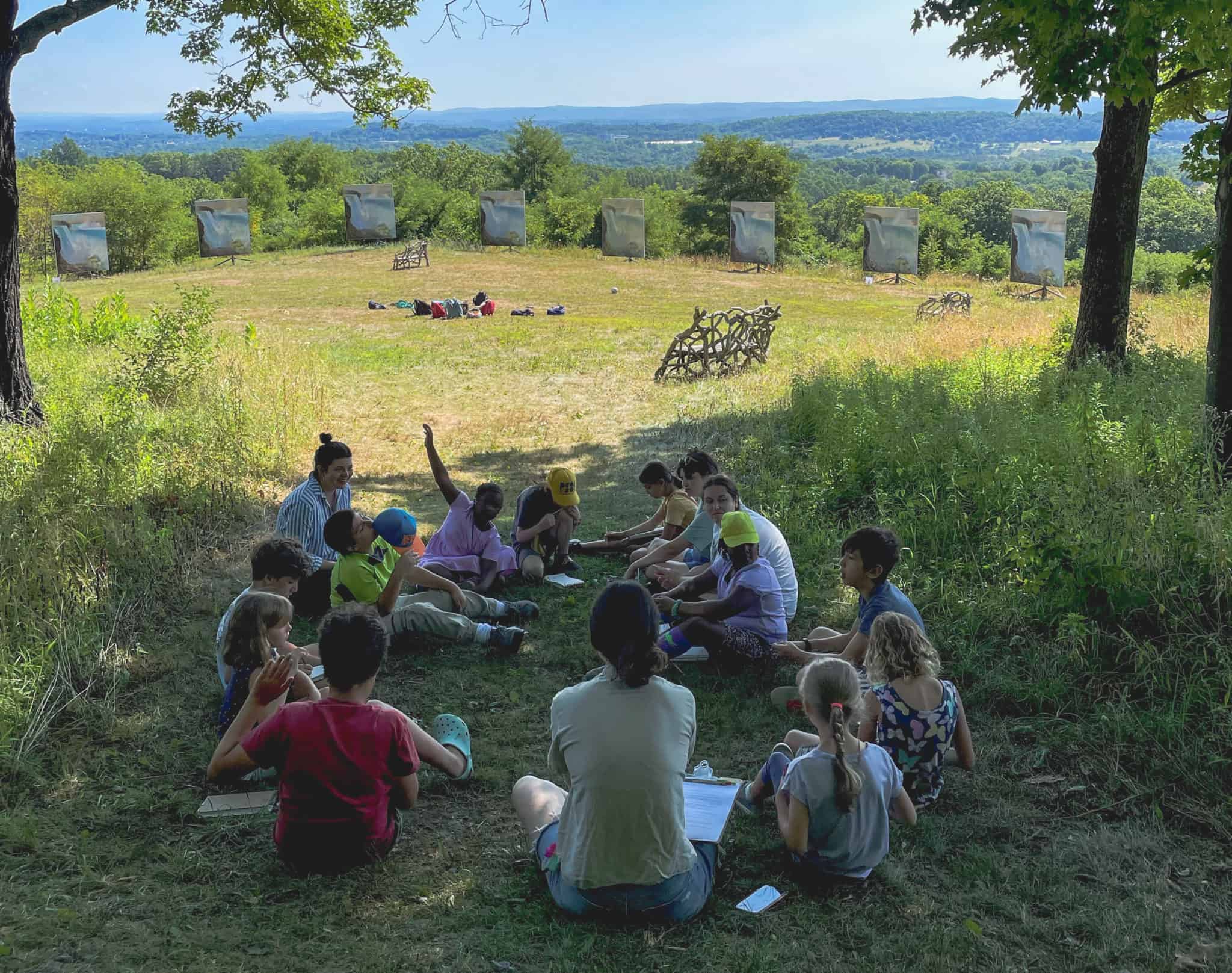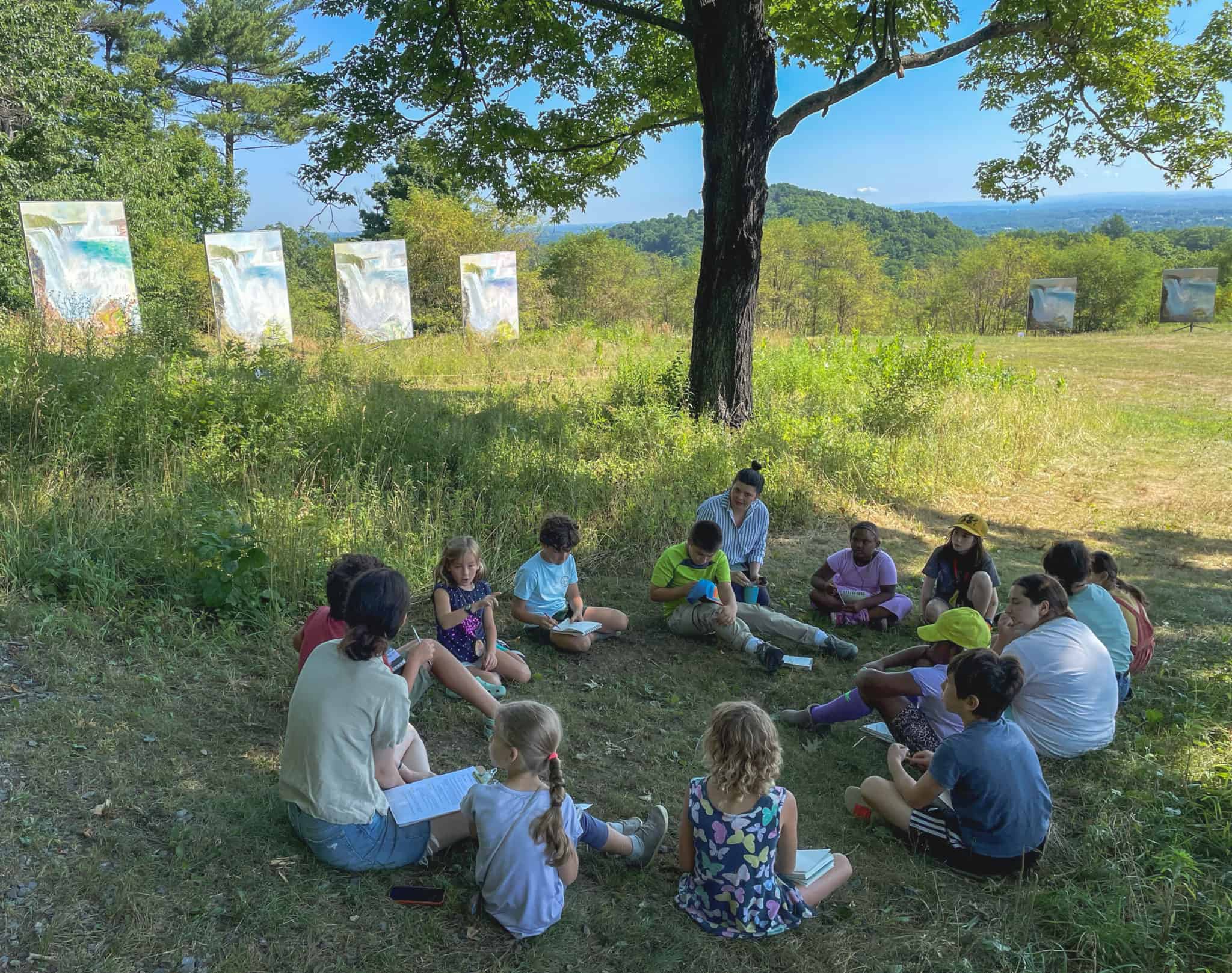EXHIBITIONS
Sacred Site by Diana Wege
July 13 – October 31, 2022
Sacred Site presents a rare opportunity to encounter the full scale and impact of Frederic Church’s monumental canvases in the landscape he designed at Olana. The installation comprises twelve replicated works created by contemporary artist Diana Wege, who engaged with Church’s Niagara Falls, from the American Side (1867) over a decade. Just as Church’s large-scale paintings called 19th-century audiences to wonder at nature’s awe-inspiring power, this project calls us to consider the connections between humanity, nature, public land, and personal inspiration. This page offers a deeper dive into this exciting project, and we invite you to visit Sacred Site to experience it yourself.
Church’s awe-inspiring subject matter, Niagara Falls, and the scale of his original artwork captures the power and fragility of the natural world. The eight canvases on the right side of the Mount Merino overlook are faithful to the colors of Church’s original, while the four on the left are intended as “variations on a theme” and emphasize abstract qualities of Church’s imagery. Each of the twelve canvases were meticulously hand-painted by Wege. The twelve works flank Mt. Merino, a forested spot in Olana’s historic viewshed that was protected from development in 2008. Placing the works at this significant location in Church’s designed landscape calls attention to the vulnerability of our environments and the importance of land stewardship.
For Wege, these twelve paintings ask viewers to contemplate the spiritual significance of land and landscape. Just as the Churches were deeply curious about world religions and collected artifacts of Islam, Jainism, and Buddhism, among others, Wege’s work emerged from her interactions with global faith traditions and their contact with the divine in nature. These objects collectively create a “sacred site” for contemplation of the natural world around us.
Special thanks to the staff of The Olana Partnership, the New York State Bureau of Historic Sites, and the New York State Parks Office of Parks, Recreation and Historic Preservation – Taconic Region.
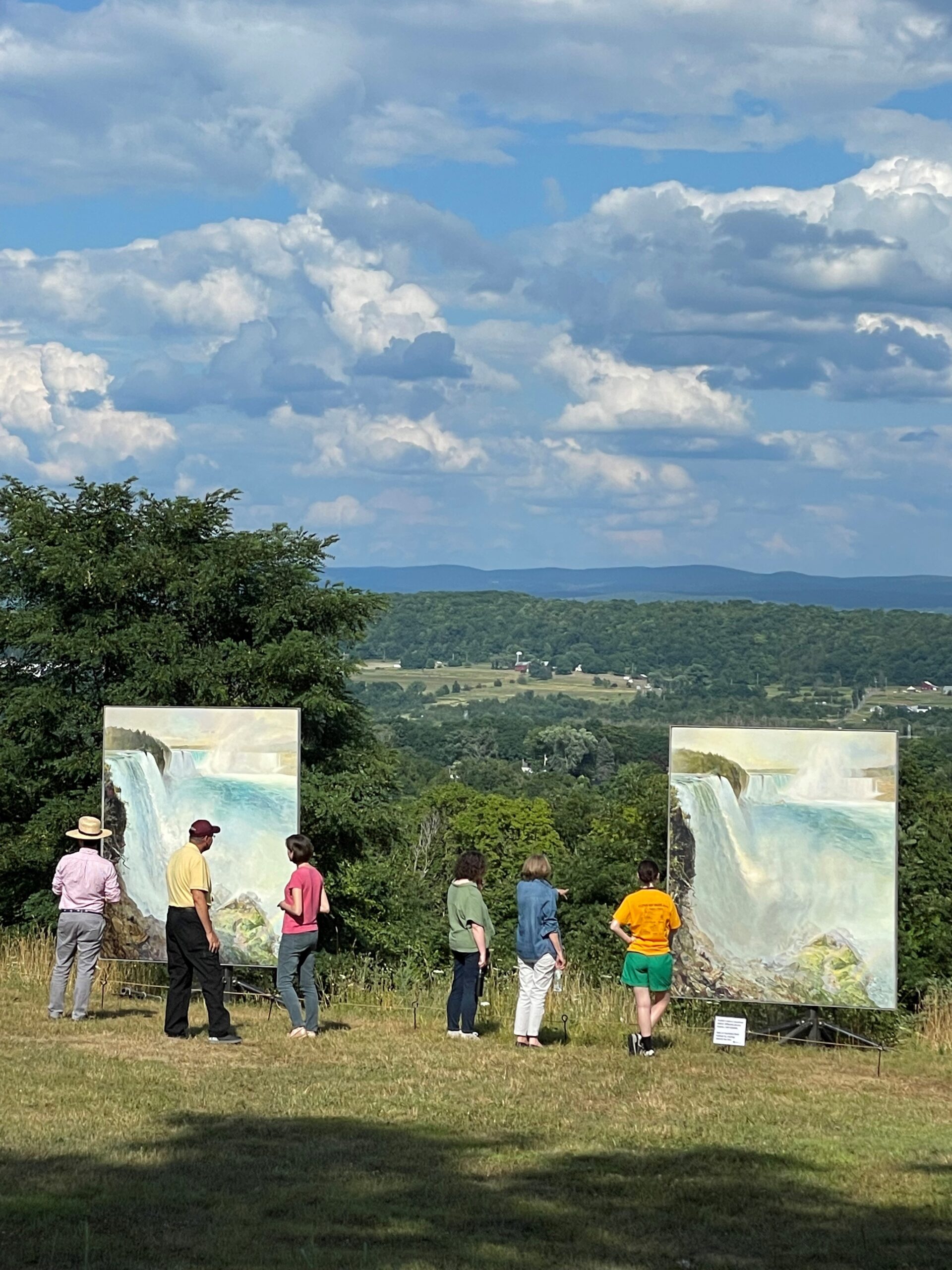
Frederic Church and Niagara Falls
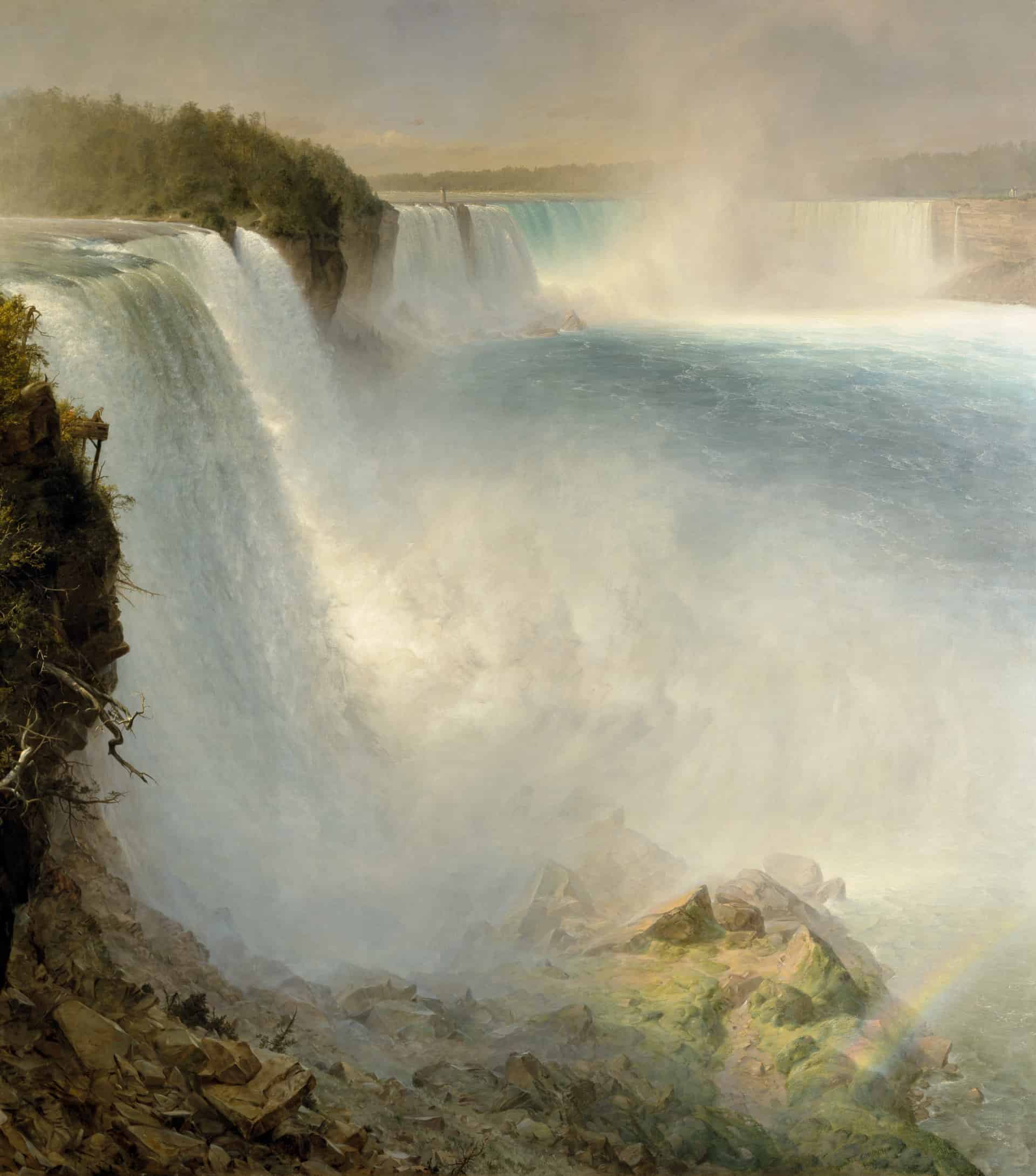
Sacred Site heralds The Olana Partnership’s “Niagara Year”–a year of programming and projects designed to examine Frederic Church’s role in creating and advocating for protected public lands. 2022 also marks Frederick Law Olmsted’s 200th birthday. Olmsted was Church’s key ally in the preservation of Niagara Falls as an international parks partnership and the designer of Central Park, of which Church was a commissioner.
When Frederic Church unveiled his first major painting of Niagara Falls in 1857 (Niagara, National Gallery of Art), he defied period claims that the subject was so overwhelming that no painting could do it justice. Church’s groundbreaking panoramic view over the precipice of the Falls astonished period audiences; one reviewer famously described it as “Niagara, with the roar left out!” This Niagara earned Church critical acclaim across the United States and Great Britain, launching an international reputation and financial success that few could rival. Church, not satisfied with just one famed canvas of the iconic Falls, returned to the subject in major paintings twice more, producing Under Niagara of 1862 (presently unlocated, with a chromolithograph and study in the Olana collection) and 1867’s Niagara Falls, from the American Side that is the focus of this installation.
Niagara Falls, from the American Side, holds several superlatives in Church’s oeuvre: it is Church’s largest canvas in terms of surface area. It is the most important Church in an international collection. The painting originated from a sketch made at Niagara Falls in 1856 from a vantage point that Church “discovered,” according to one newspaper’s assertion, by climbing a tree on the American side of the Falls and removing branches “to get a comprehensive survey of the whole cataract.” The finished piece immediately traveled to Paris to be reproduced as a chromolithograph and had its first public showing in London in February 1868 before arriving in the United States, concurrent with the release of the chromolithograph in the autumn of that year. The “new” Niagara drew favorable comparisons to his 1857 vision of the Falls, as critics remarked on Church’s faithful rendering of the natural effects of shifting mist and churning water. The painting changed hands several times, including a reacquisition by Church himself in 1870, before its final 1887 purchase by the businessman, financier, and philanthropist John Stewart Kennedy, who presented it to the National Gallery of his native Scotland.
Church’s paintings of Niagara are among his most well-known, but his impact on the legacy of this natural wonder went far beyond the canvas. Church was an advocate for environmental preservation and the creation of public lands. Church served as a commissioner of the New York City Department of Public Parks from 1871-1873, where he worked with Frederick Law Olmsted and Calvert Vaux during the development of Central Park. Olmsted and Vaux would later credit Church as a key early voice in the call to save Niagara Falls from encroaching industrialization as an international park. Church was also among the signers of an 1880 petition addressed to the Governor of the State of New York and the Governor General of Canada calling for the preservation of the Falls, which stated that “should the islands and declivities of the Niagara River be stripped of their natural woods, and occupied for manufacturing and business purposes…the loss to the world will be great and irreparable.” Thanks to the work of advocates, including Church and Olmsted, Niagara Falls, then called the State Reservation at Niagara, was preserved as the nation’s first State Park in 1885.
Viewshed Protection at Olana
The 250-acre designed landscape preserved at Olana demonstrates Frederic Church’s commitment to environmental preservation and the art of landscape architecture. As he built Olana over nearly forty years, Church planted thousands of native trees to restore woodlands previously cleared for farming and wood-cutting and laid out more than five miles of carriage roads to highlight the picturesque views found throughout the property, such as from the North Meadow area currently hosting Sacred Site. A decade ago, this section of Olana was dense with second-growth vegetation and had no far-reaching views. Since then, The Olana Partnership and New York State Parks have worked cooperatively to restore the native meadows and open spaces, a feature of Church’s original design.
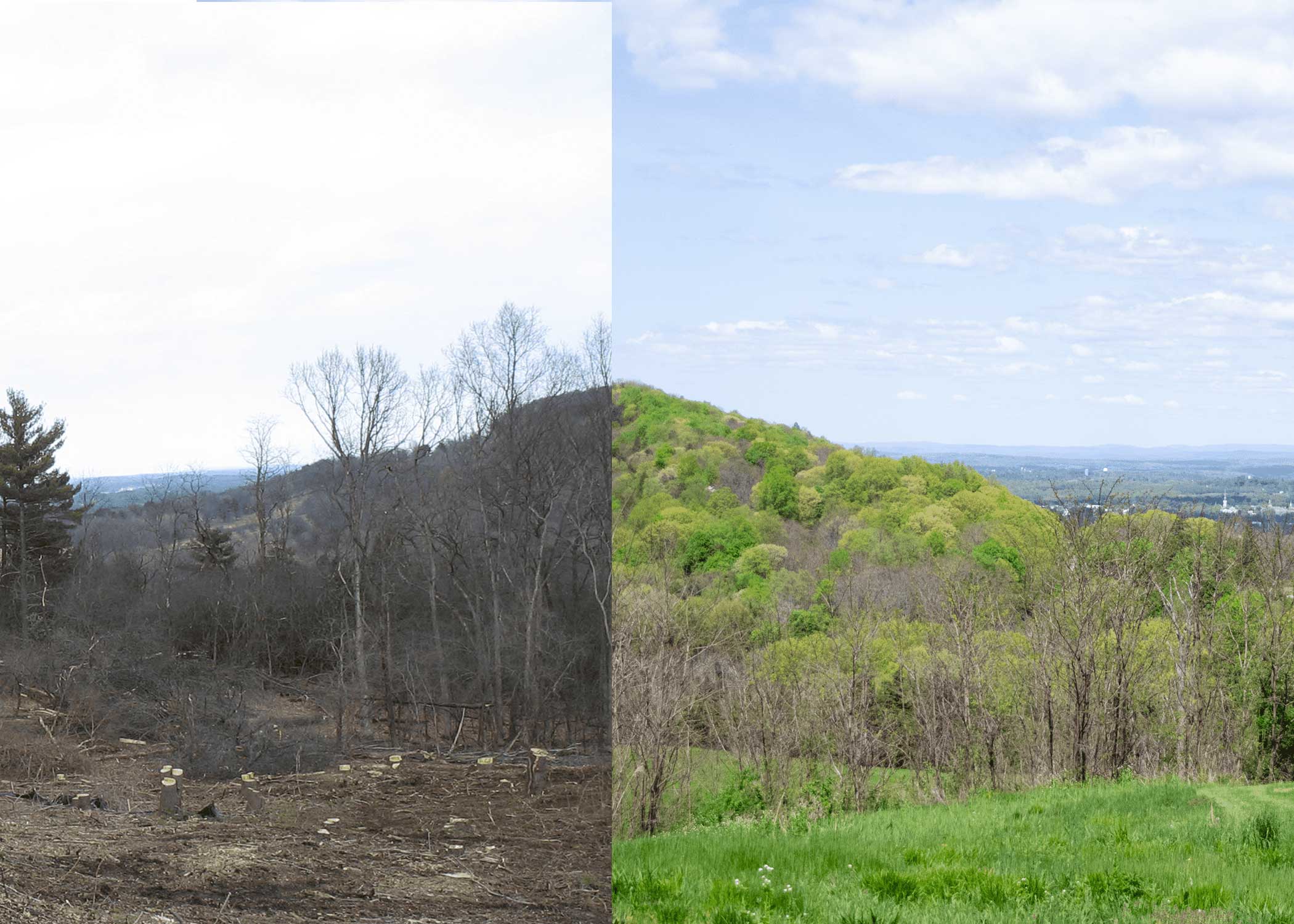
The views within and beyond this work of three-dimensional landscape art define Olana. The design functions are not unlike a landscape painting, with foreground, middle ground, and background elements linked to create a succession of harmonious compositions. In this case, Olana’s middle ground and background elements often extend beyond the historic possessions of the Church family, “borrowed views” that we call the Olana “viewshed.” The importance of the integral viewshed in Olana’s design inspires The Olana Partnership and other conservation-minded organizations work to protect these views to preserve Olana’s authentic sense of place and maintain Olana’s historic integrity.
In the late 1990s, St. Lawrence Cement proposed to build an industrial cement plant complex along the ridgeline seen beyond Sacred Site, directly northeast of Olana. This cement plant would have included the tallest structure between New York City and Albany. As a coal-fired operation, the pollution would have affected woodlands throughout the northeastern United States. The Olana Partnership became a consulting party in the legal process and enlisted testimony from national art historians about the importance of protecting Olana’s views and Church’s historical intent. As Church scholar Franklin Kelly wrote in opposition of the project, “[The] views from Olana were and are an essential part of its aesthetic…The many drawings and oil sketches that Church made from various sites on the property…are visual evidence of his interest in and devotion to his conception of the property and its significance in its entirety.” In 2005, St. Lawrence Cement abandoned the project amid protests from the Hudson Valley community and environmental organizations.

Olana’s views from this site stretch east toward the Berkshire Mountains region in Massachusetts and north over the City of Hudson toward the Green Mountains in Vermont. Directly north of Olana is Mount Merino, a popular subject for Church’s fellow landscape painters and now the focal point of Sacred Site. Scenic Hudson protected this view in 2008 as part of a larger effort to protect the Olana viewshed. This facing hillside was a prominent feature when Church created Olana, which is now protected from development. Many landscape painters like Frederic Church were in part motivated in their depictions of the natural world by encroaching industrial development; during Church’s time at Olana, there were attempts to construct utility lines to the north of Olana. Letters in Olana’s archival collection show that Church was not pleased with these visual intrusions and sought mitigation. In 1888, an American Telegraph and Telephone representative wrote to Church: “I will arrange to have the changes made to harmonize with your views.”
Today, The Olana Partnership continues to protect Olana’s significant viewshed and works in partnership with New York State Parks to educate visitors about the importance of preserving Olana’s historic views. Through programs and installations like Diana Wege’s Sacred Site, The Olana Partnership hopes to engage visitors with the legacy of public land stewardship and inspire people to become advocates for land preservation in their communities and backyards.
About Diana Wege
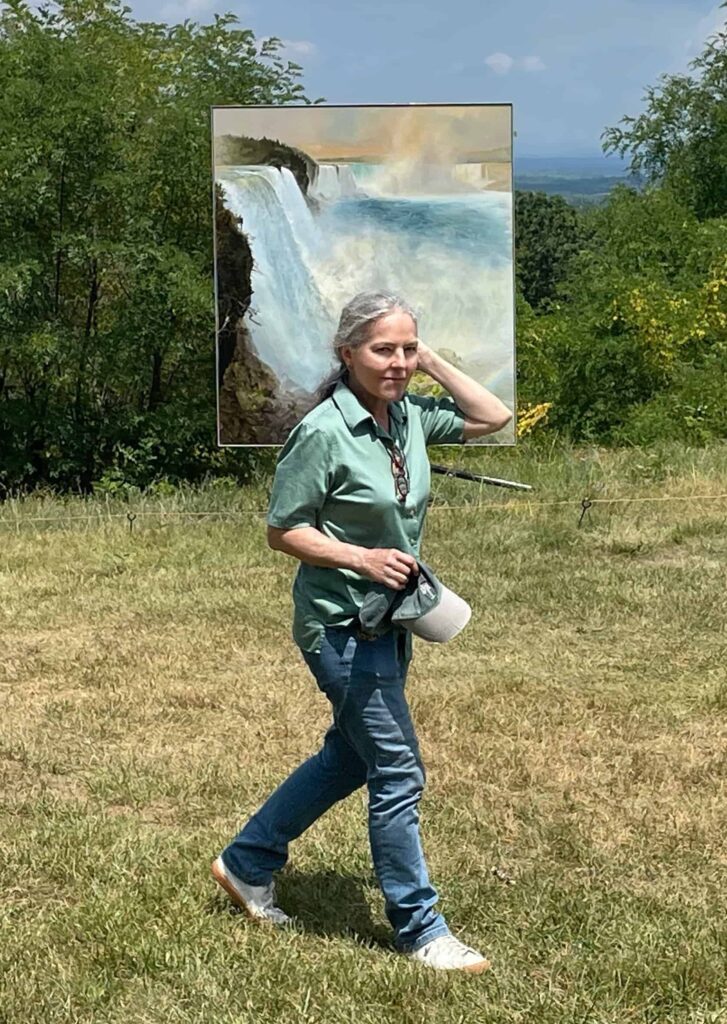
Diana Wege is a New York-based conceptual artist who passionately uses her practice to express the nexus between the environment and social justice. She has shown her work at galleries and museums across the country and in Japan. She has also installed her work outdoors on the sidewalks of New York City. A painter of wilderness area landscape, Wege has traveled widely throughout the western United States, depicting scenes of Nature Conservancy projects and national parks.
Her work has been shown in solo exhibitions at the U.S. Department of the Interior Museum in Washington, Interlochen Center for the Arts in Michigan, and at Central Booking, New York, among others. Among her commissions are works produced for Eastern Connecticut State University, Michigan Botanic Garden, and El Centro de Estudio Ambiental in Costa Rica.
The Olana Partnership is grateful for Diana Wege’s collaboration with our staff and the vision for Sacred Site at Olana. We also extend our thanks to her team: Klay Enos, Project Manager, Peter Ossi, designer, and Robert Wheeler of 21B Design, designer and fabricator, for their contributions to this project.
